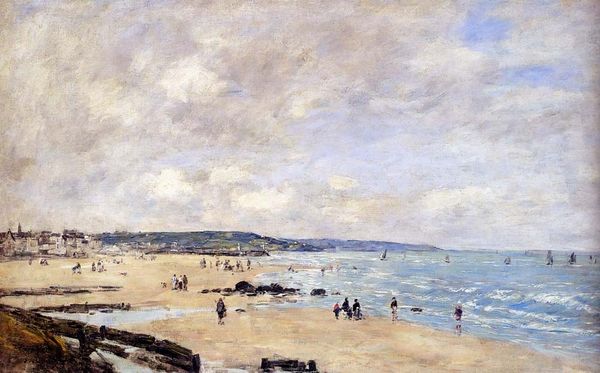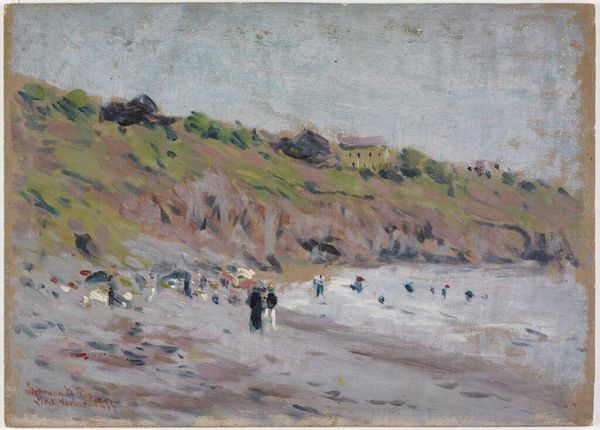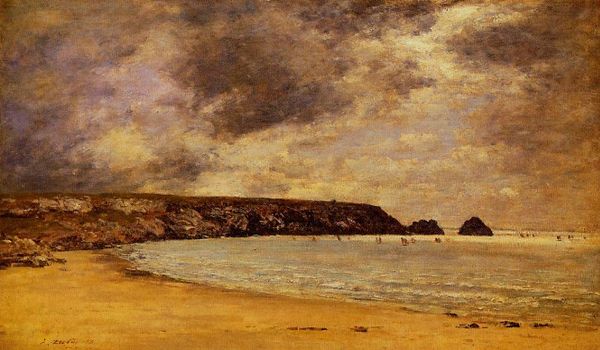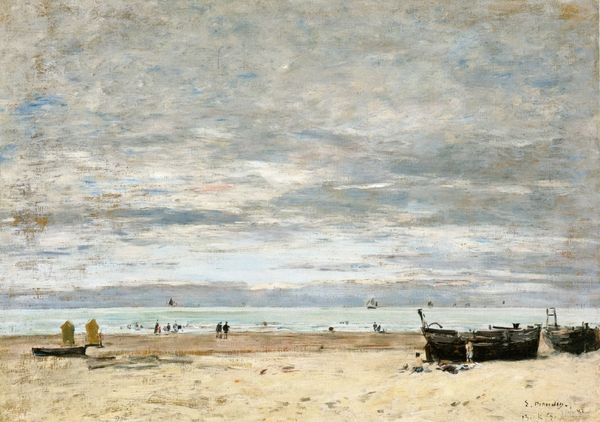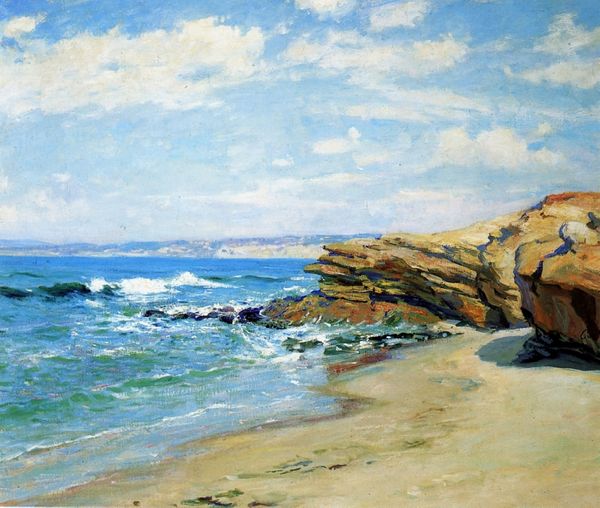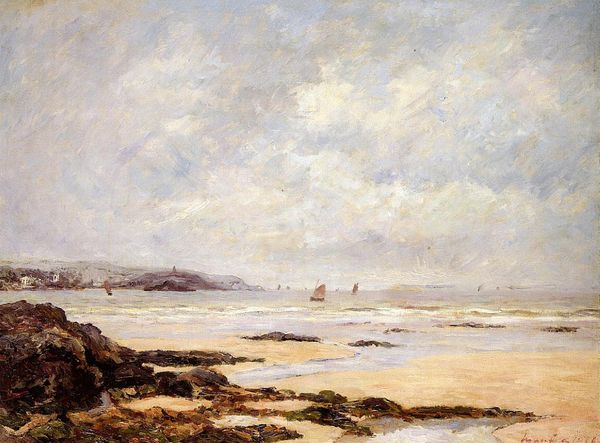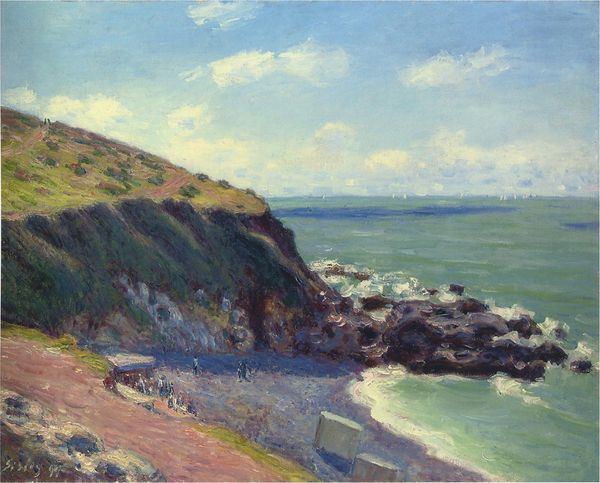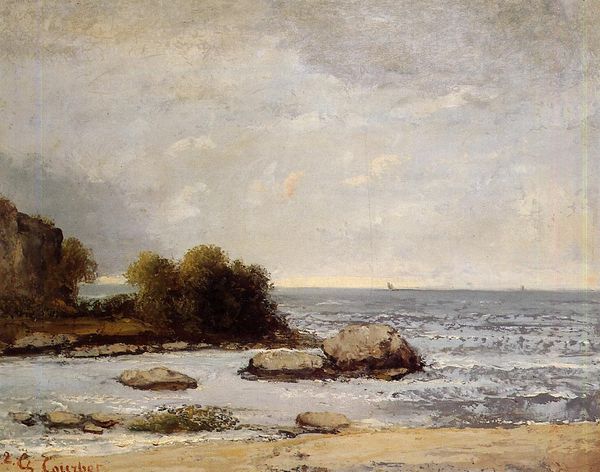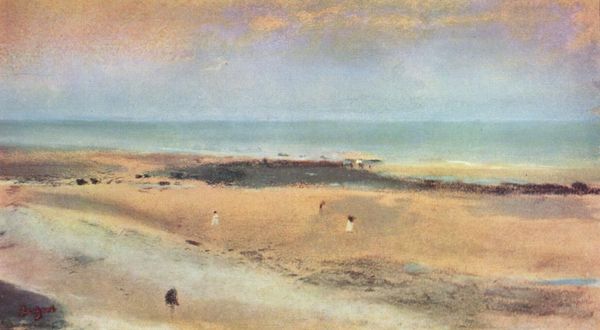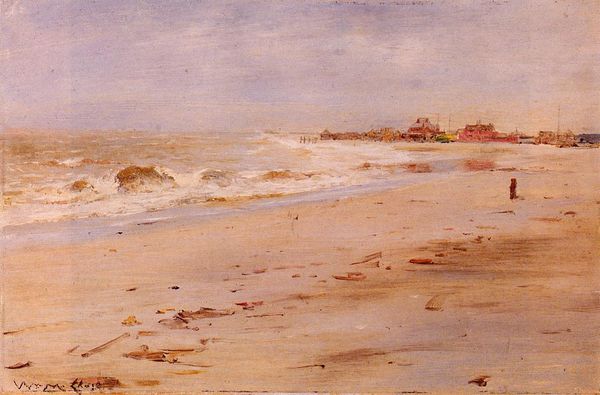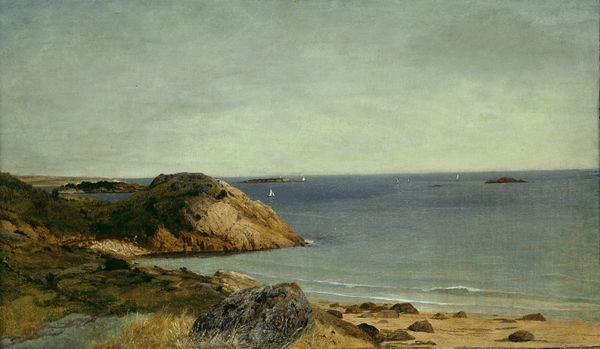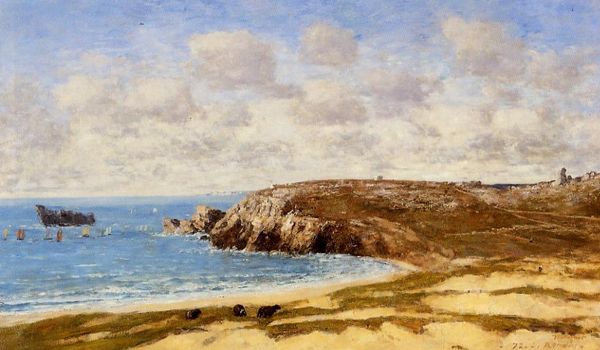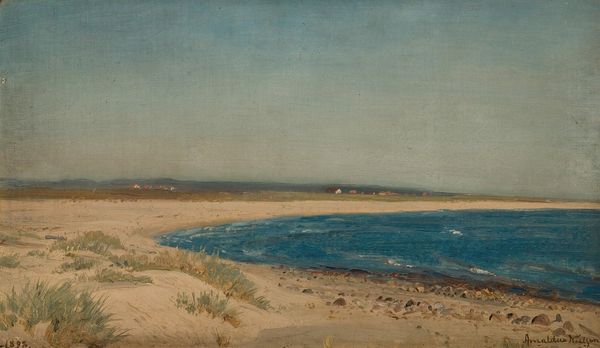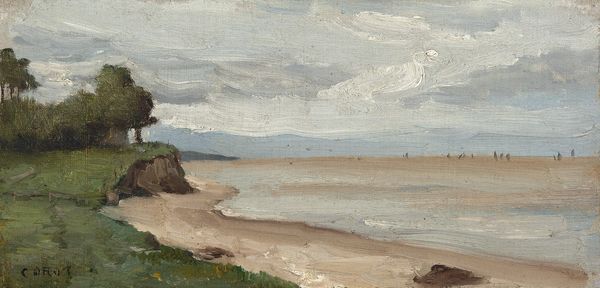
Copyright: Public domain
Editor: This is "The Beach at Saint-Énogat, Brittany," an oil painting by Clarence Gagnon from 1907. There’s a sense of tranquility to the whole scene; the beachgoers seem frozen in time. How do you interpret the imagery in this piece? Curator: It's fascinating how Gagnon captures a collective moment through fleeting impressions. Beyond just a landscape, this scene evokes cultural memory of leisure and social interaction at the turn of the century. Notice the women's attire. What does it say about their societal role and the cultural norms of the time? Editor: I guess their formal clothing indicates a very different experience of “beach-going” than we’re used to today! It's interesting how the landscape is populated with these symbols of society. Curator: Precisely. And consider the cliff. In many cultures, cliffs represent boundaries or transitions. Here, it frames the social activities on the beach. Could this be a symbol of the boundary between nature and society or perhaps the known and unknown? Editor: That's a compelling thought. I hadn’t considered the symbolic weight of the natural elements, especially set against the activities on the beach. It really elevates it beyond just a pretty scene. Curator: Ultimately, it is more than just a record of place. The painting invites us to reflect on our own relationship with leisure, nature, and the subtle yet ever-present influence of societal structures. Editor: This painting certainly provides a unique lens through which to view the past and how we still interact with the world. Curator: Indeed. It reminds us that images are never neutral. They’re steeped in meaning and invite ongoing dialogue.
Comments
No comments
Be the first to comment and join the conversation on the ultimate creative platform.
